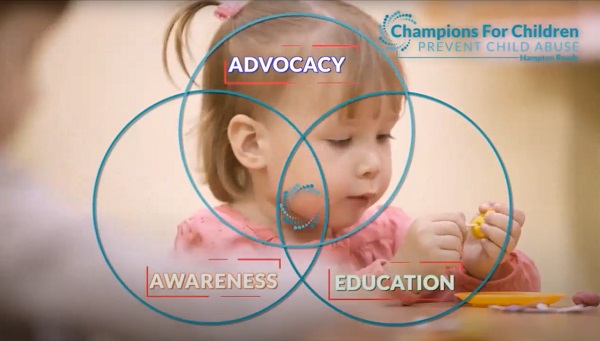Books • Publications • Media
Upstream Child Abuse Solutions
We provide upstream interventions and strategies for reducing adverse childhood experiences and promoting resilience so children and families can have positive, supportive, and healthy relationships.
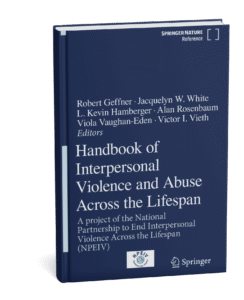
Geffner, R., White, J., Hamberger, L. K., Rosenbaum, A., Vaughan-Eden, V., & Vieth, V. (Eds.). (2022). Handbook of interpersonal violence and abuse across the lifespan: A project of the National Partnership to End Interpersonal Violence Across the Lifespan (NPEIV) (Vols. 1-6). Springer Nature. https://doi.org/10.1007/978-3-319-62122-7
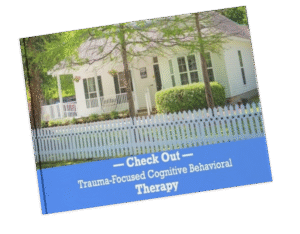
Leblanc, S., Mitchell, T., & Faulkner, S. Check Out Trauma-Focused Cognitive Behavioral Therapy. Hope House Children’s Advocacy Center, Covington, LA: Subgrant #5253 Louisiana Commission on Law Enforcement, Office for Victims of Crime, Office of Justice Program.
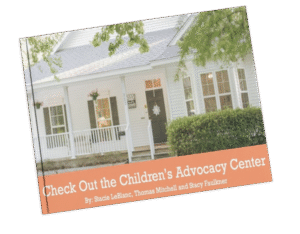
Leblanc, S., Mitchell, T., & Faulkner, S. Check Out the Children’s Advocacy Center. Hope House Children’s Advocacy Center, Covington, LA: Subgrant #5253 Louisiana Commission on Law Enforcement, Office for Victims of Crime, Office of Justice Program.
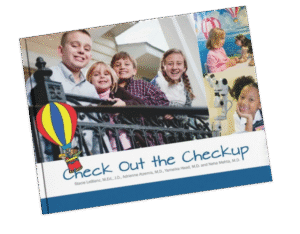
Leblanc, S., Atzemis, A., Mehta, N. & Head, Y. (2010). Check Out the Checkup. Retrieved from http://nocac.net/resources/check-out-the-check-up/
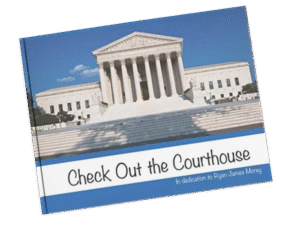
Leblanc, S., Molaison, J., & Brandt, R. (2018). Check Out the Courthouse. Retrieved from https://nocac.net/resources/check-out-the-courthouse/.
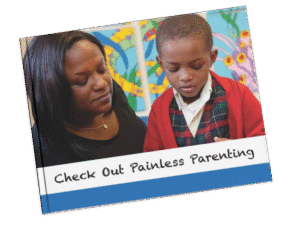
Leblanc, S., Patton, S., & Wetsman, E. (2019). Check Out Painless Parenting.
https://www.printshopcentral.com/bookstore/
book/painless-parenting-perfct-bound-version-
Publications
Child Maltreatment Prevention
-
- Vaughan-Eden, V., Vieth, V. I., & Morrison, S. C. (2020). An introduction to child and youth maltreatment: Consequences and considerations. In R. Geffner, J. White, L. K. Hamberger, A. Rosenbaum, V. Vaughan-Eden, & V. Vieth (Eds.). Handbook of interpersonal violence and abuse across the lifespan: A project of the National Partnership to End Interpersonal Violence Across the Lifespan (NPEIV) (Vol. 1, pp. 277-290). Springer Nature. https://doi.org/10.1007/978-3-319-62122-7_335-1
- Vieth, V. I., Peter, R. J., Counsil, T., Farrell, R., Johnson, R., Leblanc, S., Feigh, A., Straub, J. & Singer, (April 23, 2020). Responding to child abuse during a pandemic: 25 tips for MDTs. St. Paul, MN: Zero Abuse Project. https://zeroabuseproject.org/responding-to-child-abuse-during-a-pandemic-25-tips-for-mdts/
Child Sexual Abuse
-
- Conte, J. R., & Vaughan-Eden, V. (2018). Child sexual abuse. In J. B. Klika and J. R. Conte (Eds.). The APSAC Handbook on Child Maltreatment (4th ed.). Thousand Oaks, CA: SAGE Publications, Inc.
- Vaughan-Eden, V. (2014). Nonoffending mothers of sexually abused children. In J. Korbin and R. Krugman (Eds.). Child Maltreatment Series: Contemporary Issues in Research and Policy (Vol. 2). Handbook of child maltreatment (pp. 431-441). New York: Springer Nature.
Corporal Punishment
-
- Baker, A., LeBlanc, S. S., Schneiderman, M. (2021). Do Parenting Resources Sufficiently Oppose Physical Punishment?: A Review of Books, Programs, and Websites. Child Welfare, Vol. 99, Issue 2, pp. 77-98.
- Leblanc, S., Patton, S., & Wetsman, E. (2019). Checkout painless parenting.
https://www.printshopcentral.com/bookstore/book/painless-parenting-perfct-bound-version- - Vaughan-Eden, V., Holden, G. W., & Schneiderman, M. (2019). A national initiative to end corporal punishment. APSAC Advisor, 31 (1), 28-36.
- Vaughan-Eden, V., Holden, G. W., & Leblanc, S. S. (2018). Commentary: Changing the social norm about corporal punishment. Child and Adolescent Social Work Journal, 32 (1). DOI 10.1007/s10560-018-0592-y
Cultural Competency
-
- Briggs, E., Hanson, R., Klika, J. B., LeBlanc, S. S., Maddux, J., Merritt, D., Palusci, V., Panlilio,
C. C., Roygardner, D., Schelbe, L., Stormer, B., Valentino, K., Vaughan-Eden, V., & Barboza, G. (2023). Commentary: Addressing systemic racism in the American Professional Society on the
Abuse of Children publications. Child Maltreatment. (https://doi.org/10.1177/10775595231191394)
- Briggs, E., Hanson, R., Klika, J. B., LeBlanc, S. S., Maddux, J., Merritt, D., Palusci, V., Panlilio,
Expert Witness Testimony
-
- Vaughan-Eden, V. (2022). Testifying in child abuse cases. In L. Rapp-McCall, K. Corcoran, and B. Roberts (Eds.). Social Workers’ Desk Reference (4th ed., pp. 1252-1258). Oxford University Press.
- Leblanc, S., Molaison, J., & Brandt, R. (2018). Checkout the courthouse. Retrieved from http://nocac.net/resources/check-out-the-courthouse/.
Faith Based Response
-
- Vieth, V. I., Everson, M. D., Vaughan-Eden, V., Tiapula, S., Galloway-Williams, S. & Nettles, C. (2020). Keeping faith: The potential role of a chaplain to address the spiritual needs of maltreated children and advise child abuse multi-disciplinary teams. Liberty University Law Review, 14 (2), 349-378.
Forensic Interviewing
-
- Vaughan-Eden, V., Toth, P., Kenniston, J., & LeBlanc, S. S. (Eds.). (2023).
APSAC Practice Guidelines: Forensic interviewing of children.
New York, NY: American Professional Society on the Abuse of Children - Newlin, C., Steele, L. C., Chamberlin, A., Anderson, J., Kenniston, J., Russell, A., Stewart, H., & Vaughan-Eden, V. (2015, September). Child forensic interviewing: Best practices. Office of Juvenile Justice and Delinquency Prevention (OJJDP) Bulletin.
- Vaughan-Eden, V., Toth, P., Kenniston, J., & LeBlanc, S. S. (Eds.). (2023).
Interprofessional Collaboration
-
- Vaughan-Eden, V. (2022).
National Organization of Forensic Social Work in the 21st Century: A Historical Retrospective of the Last 10 Years.
Journal of Forensic Social Work, 6(1), 4-10. https://doi.org/10.15763/issn.1936-9298.2022.6.1.4-10
- Vaughan-Eden, V. (2022).
Intimate Partner Violence
-
- Spearman, K., Marineau, L., Owolabi, B.A., Hardesty, J., Vaughan-Eden, V., Alexander, K., Bethell, C., & Campbell, J. (2025). Part of the abuse is not letting me get him medical care: A qualitative examination of intimate partner violence and children’s health needs. Child Abuse & Neglect. (https://doi.org/10.1016/j.chiabu.2025.107451)
- Geffner, R., White, J., Hamberger, L. K., Rosenbaum, A., Vaughan-Eden, V., & Vieth, V. (Eds.). (2022). Handbook of interpersonal violence and abuse across the lifespan: A project of the National Partnership to End Interpersonal Violence Across the Lifespan (NPEIV) (Vols. 1-6). Springer Nature. https://doi.org/10.1007/978-3-319-62122-7
- Vaughan-Eden, V. (2016, April). [Reviewer/Contributor of the APSAC position paper] Allegations of child maltreatment and intimate partner violence in divorce/parental relationship dissolution. Columbus, OH: American Professional Society on the Abuse of Children.
Mandated Reporting
-
- Baker A., LeBlanc S. S., Adebayo T, Mathews B. (2021). Training for mandated reporters of child abuse and neglect: Content analysis of state-sponsored curricula. Child Abuse Negl. 2021 Mar;113:104932. doi: 10.1016/j.chiabu.2021.104932. Epub 2021 Jan 20. PMID: 33484982.
No Hit Zones
-
- Rodriguez, C., Swedburg Ericksen, K., Vaughan-Eden, V., Jackson-Nevels, B., LeBlanc, S. S., & Munshell, P. (2025). Evaluating the impact of No Hit Zone trainings in preschool-age childcare facilities for child maltreatment prevention: A quasi-experimental pilot study. Child Abuse & Neglect. (https://doi.org/10.1016/j.chiabu.2025.107432)
- Bai, R., Fleckman, J. M., Ruiz, R., LeBlanc, S. S., Gilbert, H., & Taylor, C. A. (2023). Evaluation of a medical center staff bystander intervention training for NO-HIT-ZONES: An innovative strategy to change social norms regarding physical punishment. Research in Human Development. https://doi.org/10.1080/15427609.2023.2232715
- Lombardo, L. X., Leblanc, S. S., & Vaughan-Eden, V. (2021). No hit zones in context: Changing norms through planned change. In Palusci, V. J., Vandervort, F. E., Greydanus, D. E., & Merrick, J. (Eds.). Preventing child abuse: Critical roles and multiple perspectives. Nova Science.
- Leblanc, S. S., Alexander, R., Mastrangelo, M., & Gilbert, H. (2019). No hit zones: A simple solution to address the most prevalent risk factor in child abuse. APSAC Advisor, 31 (1), 37-51.
Nonoffending Caregivers
-
- Spearman, K. J., Vaughan-Eden, V., Hardesty, J. L., & Campbell, J. (2023).
Post-Separation Abuse: A literature review connecting tactics to harm.
Journal of Family Trauma, Child Custody & Child Development. http://dx.doi.org/10.1080/26904586.2023.2177233 - Vaughan-Eden, V. (2022). Engaging nonoffending mothers of sexually abused children. In R. Krugman and J. Korbin (Eds.). Child Maltreatment Series: Contemporary Issues in Research and Policy. Handbook of child maltreatment (2nd ed., pp. 559-574). Springer Nature. https://doi.org/10.1007/978-3-030-82479-2_28
- Vaughan-Eden, V., Leblanc, S. S., & Dzumaga, Y. (2022). Succeeding with nonoffending caregivers of sexually abused children. In R. Geffner, J. White, L. K. Hamberger, A.Rosenbaum, V. Vaughan-Eden, & V. Vieth (Eds.). Handbook of interpersonal violence and abuse across the lifespan: A project of the National Partnership to End Interpersonal Violence Across the Lifespan (NPEIV) (Vol. 2, pp. 789-808). Springer Nature. https://doi.org/10.1007/978-3-319-89999-2_15
- Vaughan-Eden, V. (2014). Nonoffending mothers of sexually abused children. In J. Korbin and R. Krugman (Eds.). Child Maltreatment Series: Contemporary Issues in Research and Policy (Vol. 2). Handbook of child maltreatment (pp. 431-441). New York: Springer Nature.
- Spearman, K. J., Vaughan-Eden, V., Hardesty, J. L., & Campbell, J. (2023).
Trauma-Informed Care
-
- Geffner, R., White, J., Hamberger, L. K., Rosenbaum, A., Vaughan-Eden, V., & Vieth, V. (Eds.). (2022). Handbook of interpersonal violence and abuse across the lifespan: A project of the National Partnership to End Interpersonal Violence Across the Lifespan (NPEIV) (Vols. 1-6). Springer Nature. https://doi.org/10.1007/978-3-319-62122-7
UP FOR CHAMPIONS, in partnership with THE UP INSTITUTE, supports the professionals working to solve child abuse and neglect globally, through advocacy, public education, and family support programs. It is a nonprofit 501(c)(3) organization that aims to create safe and healthy communities for children and their families. UP FOR CHAMPIONS works with community, state, and national organizations to expand and disseminate knowledge about child abuse and neglect.


